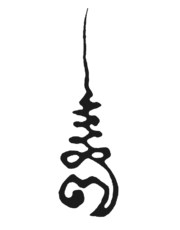Bhante Sujato | |
|---|---|
 | |
| Personal | |
| Born | Anthony Best November 4, 1966 Perth, Western Australia |
| Religion | Buddhism |
| Nationality | Australian |
| School | Unknown |
| Occupation | Bhikkhu (monk) |
| Senior posting | |
| Teacher | Ajahn Brahm[1] |
| Based in | Sydney |
| Website | lokanta |
| Thai Forest Tradition | ||||||||||||||||||||||||||||||||||||||||
|---|---|---|---|---|---|---|---|---|---|---|---|---|---|---|---|---|---|---|---|---|---|---|---|---|---|---|---|---|---|---|---|---|---|---|---|---|---|---|---|---|
 | ||||||||||||||||||||||||||||||||||||||||
| Bhikkhus | ||||||||||||||||||||||||||||||||||||||||
|
||||||||||||||||||||||||||||||||||||||||
| Sīladharās | ||||||||||||||||||||||||||||||||||||||||
|
||||||||||||||||||||||||||||||||||||||||
| Related Articles | ||||||||||||||||||||||||||||||||||||||||
Sujato, known as Ajahn Sujato or Bhikkhu Sujato (born Anthony Best[1]), is an Australian Buddhist monk ordained into the Thai forest lineage of Ajahn Chah.[2] Formerly a Theravādin, Sujato has recently asserted "I'm not Theravādin".[3]
YouTube Encyclopedic
-
1/5Views:5 1333 5087 23024 4786 543
-
Early Buddhism's Spirit of Inquiry: Bhikkhu Sujato's Point
-
Right Knowledge, Liberation Wksp III - Pt 5 | Ajahn Brahmali, Ajahn Sujato & Ven Sunyo | 22 Jul 2023
-
The Four Elements | Ajahn Sujato | 21 July 2023
-
Differences Between Early Buddhism and Theravada: an Essay By Bhante Sujato
-
Mahāsatipaṭṭhānasutta - Part I | Bhante Sujato
Transcription
Life
A former musician[4] with the post punk Alternative rock Australian band Martha's Vineyard, who had toured with, amongst others, Simply Red, INXS, Eurythmics, and proto-punk garage band The Saints before disbanding in 1990,[5] Sujato became a monk in 1994 in the ascetic Forest Tradition of Ajahn Chah, a religious order which encourages a life of contemplation and meditation.[4] He took Upasampadā higher ordination in Thailand and lived there for years before returning to Australia.[4] He spent several years at Bodhinyana Monastery in Western Australia before going on to found Santi Forest Monastery in 2003 where he served as the abbot. Following Sujato's wishes, Santi became a Bhikkhunī ( Buddhist nun's ) monastery Vihara in 2012, and he returned to live in Bodhinyana.[6]
Monastic work
In 2005, Sujato co-founded the Buddhist website SuttaCentral[2] along with Rod Bucknell and John Kelly, to provide access to Early Buddhist texts in their original language and make translations available in modern languages.[7] After being unable to secure copyright-free digital translations of the Pali Canon for SuttaCentral, Sujato moved to the island of Chimei, off the coast of Taiwan,[1][6] to undertake the task of creating English translations of the four Nikāyas, living there from 2015 to 2018. These translations have since been published on SuttaCentral, and as free edition books.[8]
In 2019, Sujato moved to Sydney to establish Lokanta Vihara (the Monastery at the End of the World) with his long term student, Akaliko, to explore what it means to follow the Buddha’s teachings in an era of climate change, globalised consumerism, and political turmoil.[9] He is also involved with Engaged Buddhism.[1] In a Buddhist speech entitled I am an anarchist for Dhammanet, Sujato states his anarchist ideology, specifically aligning himself with anarcho-pacifism, which he explains as being compatible with The Buddha, Buddhist lay and renunciant life, as well as being in accord with the monastic vinaya. In the speech, Sujato explains his belief that The Buddha was also an anarchist.[10]
Bhikkhuni
Sujato along with his teacher Ajahn Brahm were involved with Re-establishing Bhikkhuni Ordination in the Forest sangha of Ajahn Chah.[11] Sujato along with other scholars such as Brahm and Analayo[12] had come to the conclusion that there was no valid reason the extinct bhikkhuni order couldn't be re-established.[1][13] The ordination ceremony led to Brahm's expulsion from the Thai Forest Lineage of Ajahn Chah. Sujato however, was not deterred or intimidated by such a response, and, remaining faithful to his convictions that there was no reason the Bhikkhunī order should not be revived, went on to successfully found Santi Forest Monastery, and following Sujato's wishes, Santi has since flourished as a Bhikkhunī (Buddhist nun) monastery Vihara since 2012.[11]
Bibliography
- Sujato (2012), A History of Mindfulness (PDF), Santipada, ISBN 9781921842108
- Sujato (2012), A Swift Pair of Messengers: Calm with Insight in the Buddha's Words, Santipada, ISBN 9781921842023
- Sujato (2012), Sects & Sectarianism: The Origins of Buddhist Schools, Santipada, ISBN 9781921842085
- Sujato (2012), Bhikkhuni Vinaya Studies: Research and Reflections on Monastic Discipline for Buddhist Nuns, Santipada, ISBN 9781921842146
- Sujato (2012), White Bones Red Rot Black Snakes (PDF), Santipada, ISBN 9781921842030
- Sujato; Brahmali, Bhikkhu (2015), The Authenticity of the Early Buddhist Texts (PDF), Chroniker Press, ISBN 9781312911505
References
- ^ a b c d e Lam, Raymond (9 December 2016). "An Afternoon with Ajahn Sujato: Personal Courage and Restoring the Sangha's Moral Purpose". Buddhistdoor Global. Retrieved 7 September 2019.
- ^ a b "'Buddha's words a gift to humanity'". Daily News. 20 March 2019. Retrieved 7 September 2019.
- ^ https://discourse.suttacentral.net/t/stefan-karpik-on-pali/31650/4
- ^ a b c "A Meeting with Ajahn Sujato from Australia". University of Sri Jayewardenepura. 30 May 2018. Retrieved 7 September 2019.
- ^ "Bhante Sujato". Buddhachannel. 9 November 2009. Retrieved 8 September 2019.
- ^ a b "Bhante Sujato". Buddhist Society of Western Australia. Retrieved 7 September 2019.
- ^ "About SuttaCentral". SuttaCentral. Retrieved 7 September 2019.
- ^ "Sujato: "Translating a 2500 year-old Sacred Text for a Modern Audience"". Ho Center for Buddhist Studies. 29 October 2019. Retrieved 7 September 2019.
- ^ "'About Us'". Lokanta Vihara. Retrieved 20 April 2020.
- ^ Best, Anthony (4 December 2020). I Am an Anarchist.
- ^ a b Thanissara; Cintamani; Jitindriya (25 August 2010). "The Time Has Come". Lion's Roar. Retrieved 8 September 2019.
- ^ Analayo (2013). "The Revival of the Bhikkhunī Order and the Decline of the Sāsana" (PDF). The Journal of Buddhist Ethics. 20. ISSN 1076-9005.
- ^ Sujato. "Bhikkhuni Ordination". Buddhist Society of Western Australia. Retrieved 8 September 2019.
External links
 Works by or about Bhante Sujato at Wikisource
Works by or about Bhante Sujato at Wikisource- Sujato's Blog
- Dhamma talks by Sujato
- Lokanta Vihara website
